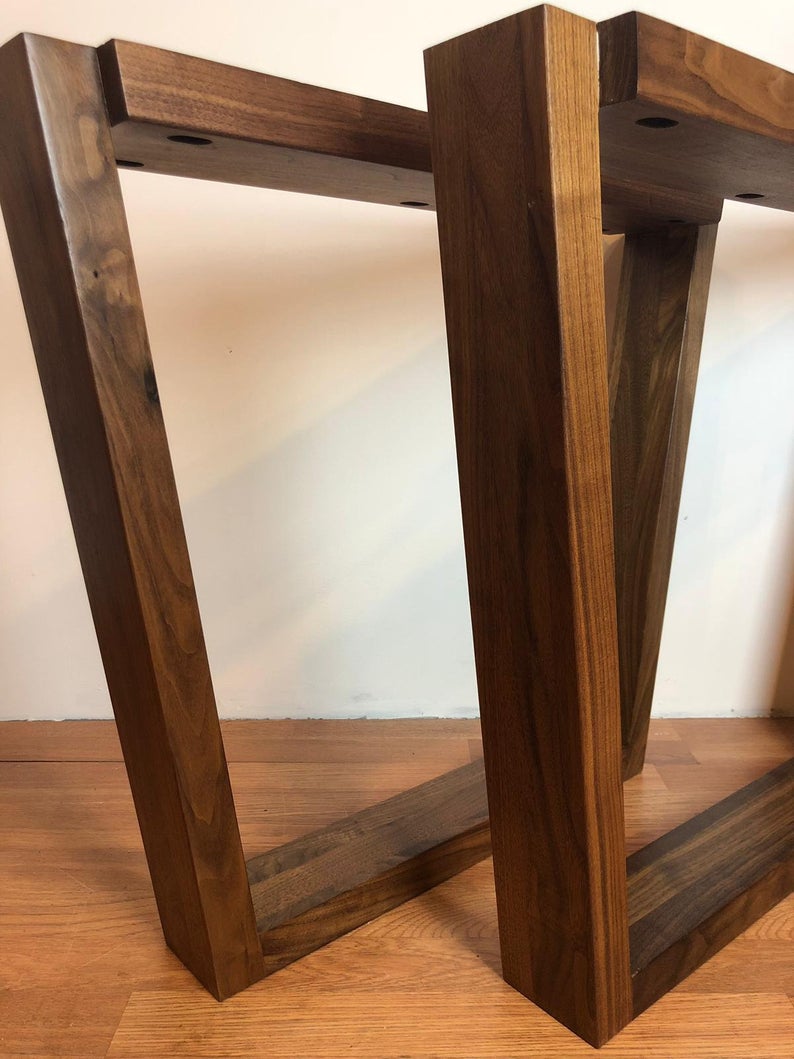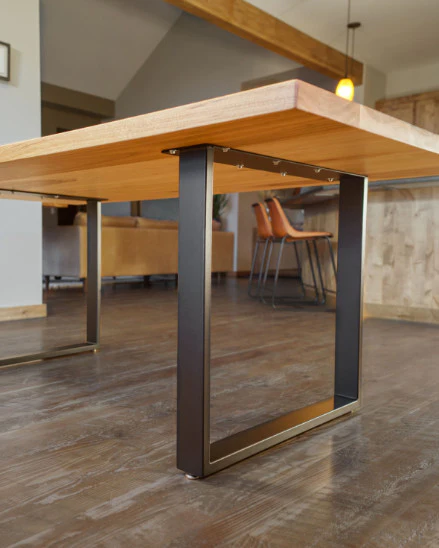Find Ageless Elegance in Handcrafted Dining Table Legs Wood Selections
Find Ageless Elegance in Handcrafted Dining Table Legs Wood Selections
Blog Article
Secret Factors to Bear In Mind for Dining Table Legs Timber Choices
When selecting wood for dining table legs, several crucial aspects necessitate mindful factor to consider to ensure both performance and aesthetic charm. The option of wood type, defined by its longevity and unique grain patterns, plays a pivotal role in the overall design and longevity of the piece.
Timber Kind and Characteristics
When choosing wood for eating table legs, it is important to comprehend the special attributes of numerous timber types. Different woods offer distinct benefits and negative aspects, affecting both the toughness and visual charm of the completed product.
Oak, understood for its impressive durability, likewise features a famous grain that can add personality to the table. Cherry wood, with its rich color that grows over time, provides an extravagant appearance but may need even more maintenance to stop scratches.
On the various other hand, softwoods like yearn and fir are a lot more economical and less complicated to deal with, yet they are much less resilient than woods. Pine is lightweight and features a warm, rustic look, making it a favored option for informal dining setups. However, it is much more at risk to dents and scrapes.
Recognizing these qualities will certainly aid in making a notified choice to ensure the legs of the table fulfill both visual and functional needs.
Grain Patterns and Visual Appeal
The wood's grain is not merely a visual characteristic; it imparts an unique personality and beauty to each item. Various wood species exhibit distinctive grain patterns, varying from the straight lines of maple to the detailed swirls of oak and the striking number of walnut.
Furthermore, the positioning and scale of the grain can affect the viewed size and sophistication of the table. Larger, more obvious grains may lend a vibrant, remarkable effect, while finer, subtler grains can produce a refined, downplayed appearance. In addition, the finishing procedure can better improve these patterns, highlighting the natural charm of the timber and bringing out rich colors.
Ultimately, the selection of grain pattern need to balance with various other style components, such as the tabletop and bordering furniture, making certain a cohesive visual that boosts the dining experience. Thoughtful choice of timber grain not only adds to the table's beauty however additionally mirrors the owner's taste and design.
Longevity and Stamina
The resilience and stamina of table legs are extremely important considerations for ensuring long life and stability in any type of dining space. Choosing the ideal timber is important, as different varieties exhibit varying degrees of strength. Woods such as oak, maple, and cherry are frequently favored for their integral strength and resistance to put on. These materials not only stand up to day-to-day use however likewise support heavy tons, making them ideal for eating tables that often suit numerous restaurants. Dining Table Legs Wood.

Inevitably, buying top notch wood and robust building methods will certainly generate a dining table that stands the test of time, while supplying a trusted foundation for countless dishes shared amongst friends and family. Prioritizing sturdiness and strength makes sure that your table stays practical and aesthetically pleasing for several years ahead.
Maintenance and Care
Correct upkeep and care are important for maintaining the toughness and stamina of eating table legs made from timber. Normal cleaning is essential; making use of a soft, moist cloth makes certain that dirt and debris do not build up, which can result in scratches and monotony. It is advisable to prevent extreme chemicals or abrasive materials that could damage the finish.
Additionally, applying a suitable wood polish or wax occasionally can assist keep the click to investigate shine and secure the wood from dampness and spills. It is important to adhere to the maker's visit homepage referrals concerning the kind of product to utilize, as particular finishes may respond adversely to certain chemicals.
Moisture and temperature changes can additionally affect wooden table legs, triggering them to warp or split. It's best to put the table far from direct sunshine and heat sources. If the table legs have any kind of scratches or dents, addressing these quickly can stop more damages.
Lastly, periodically inspecting the joints and screws for tightness is vital to maintain structural stability (Dining Table Legs Wood). By adhering to these maintenance methods, house owners can guarantee their wood eating table legs continue to be enticing and useful for several years ahead
Ecological Factors To Consider
When picking timber for eating table legs, it's important to take ecological factors to consider into account. The sourcing and sustainability of wood are vital in decreasing eco-friendly influence. Going with wood from certified sources, such as those endorsed by the Clicking Here Woodland Stewardship Council (FSC), makes sure that the lumber is gathered responsibly, promoting woodland conservation and biodiversity.

Furthermore, local sourcing of wood reduces transportation emissions, sustaining neighborhood economic situations while lessening ecological influence. It is additionally a good idea to be familiar with the timber's treatment and finishing processes, as particular chemicals can be unsafe to both human wellness and the setting. By prioritizing sustainable timber selections, customers can contribute to environmental conservation while taking pleasure in the toughness and appeal of their dining table legs.
Conclusion
In final thought, selecting wood for eating table legs necessitates cautious factor to consider of different variables, including wood kinds, grain patterns, and sturdiness. Upkeep requirements and ecological sustainability more influence wood choices, stressing the importance of sourcing from accredited or redeemed materials.
When choosing timber for eating table legs, several important factors require cautious factor to consider to ensure both performance and visual allure.Correct maintenance and care are crucial for maintaining the durability and strength of dining table legs made from wood.When selecting wood for eating table legs, it's crucial to take environmental considerations into account. By prioritizing sustainable wood options, consumers can contribute to environmental preservation while taking pleasure in the longevity and beauty of their dining table legs.
In conclusion, selecting wood for dining table legs necessitates careful consideration of various variables, including wood kinds, grain patterns, and sturdiness. Dining Table Legs Wood.
Report this page